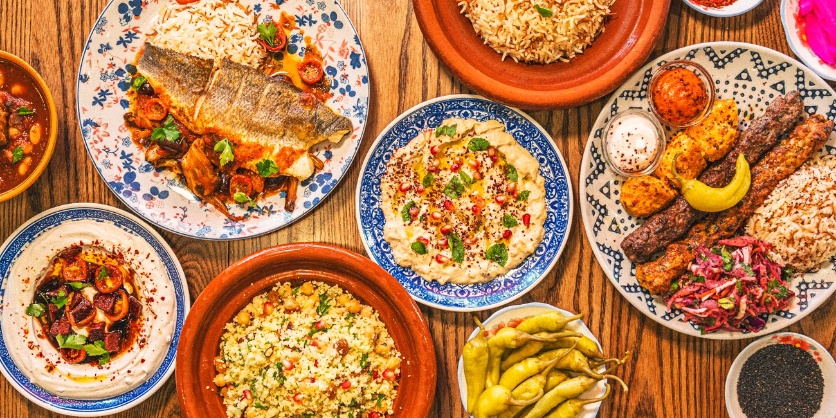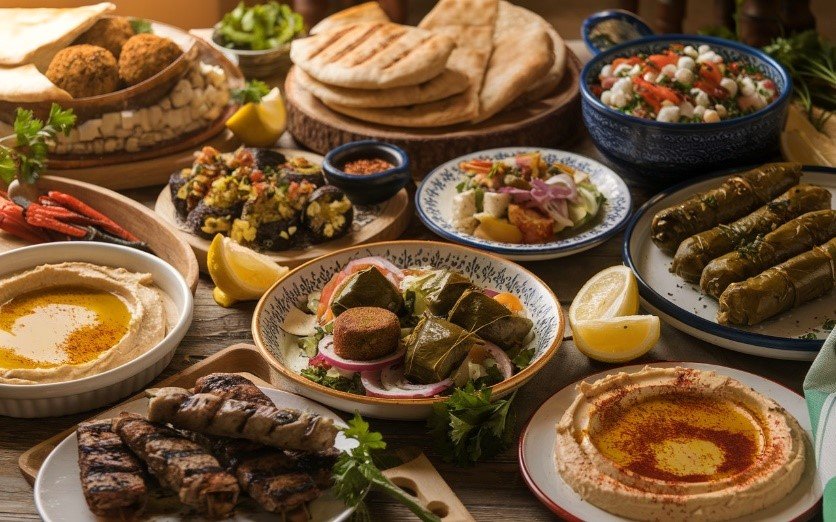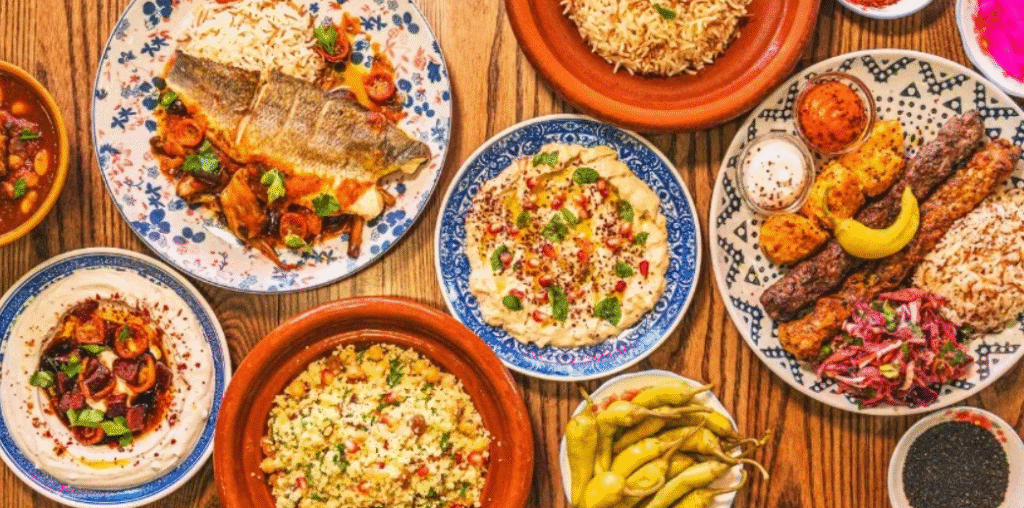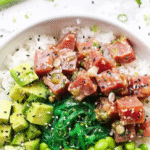Middle Eastern Cuisine: 10 Flavorful Dishes to Try
Few cuisines in the world balance spices, textures, and communal traditions as beautifully as Middle Eastern cuisine. Rooted in thousands of years of history, this food reflects cultural exchange, migration, and family rituals. From the bustling markets of Istanbul to Lebanese home kitchens, every dish tells a story of heritage and hospitality.
For many, the Middle East means mezze spreads, kebabs, hummus, falafel, and aromatic stews. But the cuisine is much more than that—it’s about gathering people around the table, breaking bread together, and sharing flavors that nourish both body and soul.
In this guide, we’ll dive into 10 flavorful Middle Eastern dishes you should try, whether you’re exploring restaurants or recreating them at home.
Why Middle Eastern Food is Beloved Globally
Story: When Omar, a Syrian immigrant in Canada, opened his small shawarma shop, he noticed that at first only other Middle Eastern families visited. But soon, word spread about his falafel, hummus, and grilled meats. Today, his shop is a community hub where people from all backgrounds come not just for the food but for the warm hospitality.
What makes Middle Eastern food special?
Heavy use of fresh herbs and spices like mint, parsley, cumin, and sumac.
Balanced meals that combine proteins, vegetables, grains, and legumes.
Emphasis on communal dining—mezze platters are meant to be shared.
Healthy cooking methods—lots of grilling, stewing, and plant-based dishes.
10 Flavorful Middle Eastern Dishes You Must Try
1. Hummus
Perhaps the most famous dish, hummus is a creamy spread made from chickpeas, tahini (sesame paste), garlic, lemon, and olive oil.
Cultural Insight: Its origins are debated (Lebanon, Palestine, Israel, Syria), but it has become a global ambassador of Middle Eastern cuisine.
Tip: For the creamiest hummus, peel chickpeas or use warm ones when blending.
Case Study: A Tel Aviv restaurant became world-famous by serving over 10 varieties of hummus—proving one dish can be endlessly versatile.
2. Falafel
Deep-fried balls made from ground chickpeas or fava beans mixed with herbs and spices. Crispy on the outside, fluffy on the inside.
Story: In Cairo, falafel (ta’amiya) is a breakfast staple. Vendors fry them fresh in the morning, serving them with bread and pickles.
Tip: Use fresh herbs like parsley and cilantro to keep the mixture green and flavorful.
3. Shawarma
Marinated meat (often lamb, chicken, or beef) roasted on a vertical spit, shaved off, and served in pita bread with garlic sauce, pickles, and veggies.
Cultural Note: Shawarma was influenced by Turkish döner kebab but developed unique Middle Eastern marinades using cardamom, cinnamon, and cumin.
Tip: At home, you can mimic shawarma by marinating meat overnight and roasting it in the oven.
4. Tabbouleh
A refreshing salad of parsley, mint, tomatoes, onions, bulgur wheat, olive oil, and lemon juice.
Case Study: Lebanese cuisine elevated tabbouleh into a national pride dish. It’s often served as part of mezze spreads and represents freshness.
Tip: Chop parsley finely—it should be the main star, not the bulgur.
5. Baba Ghanoush
A smoky eggplant dip made with tahini, lemon, and garlic.
Story: In Damascus, baba ghanoush is a standard side dish for family dinners, often paired with grilled meats and flatbreads.
Tip: Roast or grill the eggplant until charred for authentic smoky flavor.
6. Kibbeh
Often called the national dish of Lebanon, kibbeh is made with bulgur, minced onions, and ground meat (usually lamb). It can be baked, fried, or served raw (kibbeh nayyeh).
Cultural Note: Kibbeh varies by region—Syrians bake it in trays, while Iraqis add spices like cinnamon and allspice.
Tip: Use chilled meat to help shape the mixture without it falling apart.

7. Mansaf
Jordan’s national dish: lamb cooked in fermented yogurt sauce, served over rice with almonds and pine nuts.
Story: Mansaf is not just food—it’s a symbol of hospitality. Traditionally eaten on large platters, guests scoop it with their right hand using bread.
Tip: If jameed (fermented yogurt) isn’t available, use plain Greek yogurt mixed with dried mint.
8. Dolma (Stuffed Grape Leaves)
Tender grape leaves filled with rice, herbs, and sometimes minced meat.
Case Study: Dolma traces back to the Ottoman Empire, spreading across Turkey, Iraq, Lebanon, and Greece, with each region adding its twist.
Tip: Roll leaves tightly but not too firm—they expand slightly while cooking.
9. Shakshuka
Eggs poached in a spicy tomato sauce with peppers, garlic, and cumin.
Story: Shakshuka originated in North Africa but became hugely popular in Middle Eastern countries like Israel and Palestine. Today, it’s a brunch favorite worldwide.
Tip: Add feta cheese or harissa for extra depth.
10. Baklava
A sweet dessert made of filo pastry layers filled with nuts and honey syrup.
Cultural Note: Though claimed by Turkey, Greece, and Middle Eastern countries, baklava is a shared heritage dessert that appears in celebrations and family gatherings.
Tip: Cut baklava before baking to prevent it from breaking.
The Essence of Middle Eastern Cooking
Middle Eastern cuisine is about sharing and celebrating togetherness. Mezze spreads of hummus, baba ghanoush, falafel, and tabbouleh create a social dining experience. Main dishes like mansaf or shawarma tell stories of migration, history, and hospitality. Desserts like baklava bring meals to a sweet close.
Real-Life Impact: Middle Eastern Food Abroad
Case Study: In London, Lebanese restaurants have become some of the most popular dining spots. Dishes like hummus, falafel, and shawarma attract not just Middle Eastern diaspora but also locals looking for healthier, flavor-packed alternatives. The rise of Middle Eastern cuisine abroad shows how food bridges cultures.
Tips for Cooking Middle Eastern Food at Home
Stock Essential Spices – cumin, coriander, cinnamon, cardamom, and sumac.
Use Fresh Herbs Generously – parsley, mint, and cilantro elevate flavors.
Experiment with Grains – bulgur, couscous, and freekeh are pantry staples.
Cook Slowly – many dishes (like stews) need time for flavors to deepen.
Balance Flavors – Middle Eastern food thrives on contrast: smoky + fresh, spicy + cooling, sweet + savory.

Conclusion
Middle Eastern cuisine is more than food—it’s tradition, hospitality, and identity served on a plate. From creamy hummus to rich mansaf, these 10 dishes showcase the diversity of flavors that make the region’s cooking so beloved.
Whether you’re enjoying a mezze platter with friends, baking baklava for a special occasion, or simmering shakshuka on a Sunday morning, you’re not just cooking—you’re connecting with centuries of culinary history.
So next time you’re planning a meal, think beyond the ordinary: add a touch of the Middle East to your table, and discover why this cuisine has captured the hearts (and taste buds) of food lovers worldwide.
References
UNESCO – Middle Eastern Cuisine as Cultural Heritage
Smithsonian Magazine – The Global Rise of Hummus
BBC Travel – History of Shawarma
National Geographic – Origins of Kibbeh
Serious Eats – Guide to Middle Eastern Spices
The Guardian – Falafel: A Symbol of the Middle East
Saveur – Authentic Recipes from Lebanon
Food & Wine – Baklava and its Global Journey
Al Jazeera – Mansaf: More than Jordan’s National Dish
Bon Appétit – Cooking with Eggplant: Baba Ghanoush Tips


